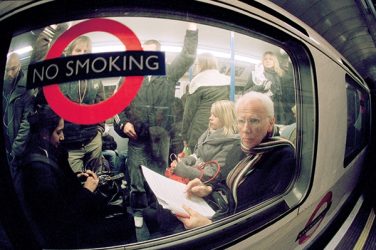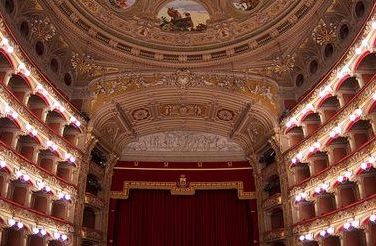E&M‘s Selva Ünal ponders creativity and how it is (under) valued in our society today; a creative streak exists in us all, she maintains—we just need to embrace it.
“All work is creative work if done by a thinking mind, and no work is creative if done by a blank who repeats in uncritical stupor a routine he has learned from others”
– Ayn Rand, Novelist/Philosopher
Opera. Photography. Theatre. Art. Film. Music. Novels… In short, arts, design and culture.
Expressing your desires, fears, hopes and dreams through arts and design makes you vulnerable and yet at the same time empowers you. There is something universal and eternal about art and design that connects people through time—no matter what ethnic group you belong to, religion you have, the language you speak.
The desire to express ourselves creatively
Mankind is born to express its creativity. This is one of the reasons we feel completely unsatisfied when we work at a mundane job. Over the last decade, more and more people are shifting their attention to creative industries, thus increasing cultural employment. What do we mean by creative industries? Creative industries—as defined by UNESCO—are “sectors of organized activity whose principal purpose is the production or reproduction, promotion, distribution and/or commercialization of goods, services and activities of a cultural, artistic or heritage-related nature.” To put it simply, it is the complete production chain of tourism from the moment the tourist arrives to the moment s/he leaves. According to the statistics portal Eurostat, in the EU, 1.2 million people aged between 15 and 29 were working in the cultural field in 2015—and surely this number has been increasing since then.
‘Creative tourism’
With globalization and the rapid developments in technology, a new field of tourism has emerged that is known as ‘creative tourism.’ Creative tourism allows the tourist to be immersed in a particular culture and to relive a particular time in history. This not only intrigues the senses of the tourist to learn without being forced to do so but it also helps the tourist to interact with the culture and the people in a place, which creates a deeper understanding of culture and/or history.
The economic impact of the creative industries is still a global niche yet to be fully utilised. According to the OECD report on ‘Tourism and the Creative Economy’, creative industries “have the potential to stimulate economic growth and job creation, support innovation and entrepreneurship, aid urban and rural regeneration, and stimulate exports.” Thus, it is important for states to implement effective policies to develop their creative industries, increase their ‘global’ competitiveness and generate employment and economic growth.

In the workplace
You don’t have to work in the creative industries to be creative. Research has shown that even the simplest changes at work can increase your level of happiness and productivity. According to research conducted by Exeter University’s School of Psychology, employees who have control over the design and layout of their workspace are not only happier and healthier but also are up to 32 per cent more productive.
The problem with being creative in the workplace is that many firms tend to stick to a very traditional idea of creativity as if it belongs to a certain part in the production chain of a good or service. For example, according to the Design Council’s National Survey in 2005, “manufacturers were more likely to see design as part of product development (80 per cent) and were less likely to see it as part of advertising and corporate communications (40 per cent).” Now, of course this survey was conducted in 2005, but has there been much change since then? Think about the company that you work for. Does it allow everyone to be creative? Or does it allow only certain departments to be creative?
Expanding Europe’s creative horizons
Arts and design, as a culture, are unfortunately still underrated and under-appreciated. Artists or designers are often thought of those who do not necessarily need a tertiary education, but many do go ahead and advance their studies. In Europe, there are about 200 universities that give art and design diplomas. Around 60 per cent of people working in the culture sector in the EU, in 2015, had a tertiary education. There are also national programs provided to enhance the creativity of youth in Europe. For example, in France, ’Envie d’agir’ (Keen to act) is a national program supporting young people aged between 11 and 30 to instill a sense of initiative and to support entrepreneurship. The program has supported more than 28,000 projects between 1987 and 2011.
Humans are creative by nature. States need to invest more to expand the power of creativity. Companies need to pay attention to—what I call— ‘the creative well-being’ of an individual.
Because, I believe, the more creative work we do, the happier we become.
Featured image: AlaitzZabaletaSarobe | via Pixabay | CC0 1.0










Show Comments
fuapzihvmx
Muchas gracias. ?Como puedo iniciar sesion?
Comments are closed.